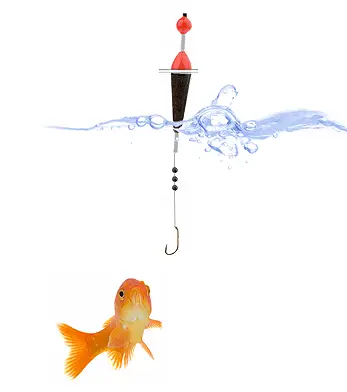
Secret #8 – Find the Hook
The type of hook I’m introducing here has two barbs—it’s the thing that gets us interested in what we’re saying while also answering the listener’s question, “What’s in it for me?” Sometimes, if the first barb works, the second one snares the listener automatically—but don’t count on it! I have often been present when a speaker is highly engaged in his or her subject and I, the listener, am decidedly not.
At a recent cocktail party, a woman I barely knew cornered me and began a blow-by-blow of every agonizing step of her day. She was animated and interested in the subject, herself, ignorant that I was evaluating my chances at survival if I took a leap out of the nearby window. (It wasn’t a total loss. I did learn that even a “really good pooper” like her miniature schnauzer, Marty, can have an off day…) No quantity of Pinot Noir could make the story interesting to me—trust me, I tested this theory.
When the hook works for the speaker but not for the listener, rethinking is necessary.
Studying both the audience and the subject is the best way I’ve discovered to find a hook. Start with the basic purpose of the presentation and then take a closer look. Ask, “Why is this important to the listener?” “Why are they there?” “What do they stand to gain?” Advanced research is also a great way to get a good hook in deeper.
In Secret #5, I used my experience as a seminar presenter as an example of how to offer ideas as an act of generosity. I’ll admit it was a struggle for me to hook into that topic, notary law, in the beginning. But I realized these people needed me desperately (whether they knew it or not) to: a) solve an immediate problem (statutory requirement/exam preparation); or b) a larger, more long-term one (understanding the legal and administrative requirements and stay out of jail!).
The hook: I was sparing these people some serious trouble while giving them the information they needed to succeed. Thinking about that hook brought the presentation to life and gave me something to do with it all the way along. (My angle was conspiratorial—I was one of them and could save them from pitfalls I’d seen others experience.) I had a clear goal, the hook.
The hook is the promise we make to the listener and we must do our best to deliver on it.
As we prepare, we check, “Will this hook my listeners?” Our words then are not simply recitation, but part of an active process of set up and delivery. If my goal above was to arm my listeners with helpful tools and essential knowledge, I had something by which to measure my success each step of the way. I kept the hook (and angle) in mind as I spoke, and observed my listeners to make sure I hit my mark. If I wasn’t succeeding, I knew my material well enough to adjust on the spot.
You: This is hard work!
Me: Yes, it is!
You: You say that like it’s a good thing. I was hoping that it would be more like…
Me: A magic pill?
You: Yes! That’s it! A pill! Have one? It’s OK with me if it’s not FDA approved.
Me: A major obstacle to doing this well is the bogus notion that it should be effortless. It’s isn’t. It takes energy. But it’s really rewarding!
You: I see what you mean—It only looks easy when it’s done right. I get it. …Now about that pill …
Once we realize that effective communicating takes energy, we stop shaming ourselves when it isn’t easy and get to work. OK, there are some people who do all of this effortlessly and well. There are people in every discipline for whom that can be said. But there are more people out there who are successful in their efforts as a result of hard work, and who enjoy those successes with great pride.
Here’s the bonus: When we offer that hook to the listener, we are engaged and focused when we speak. When we are engaged and focused, what we are not, is fearful and distracted. They are mutually exclusive states of being. I love how that works.
